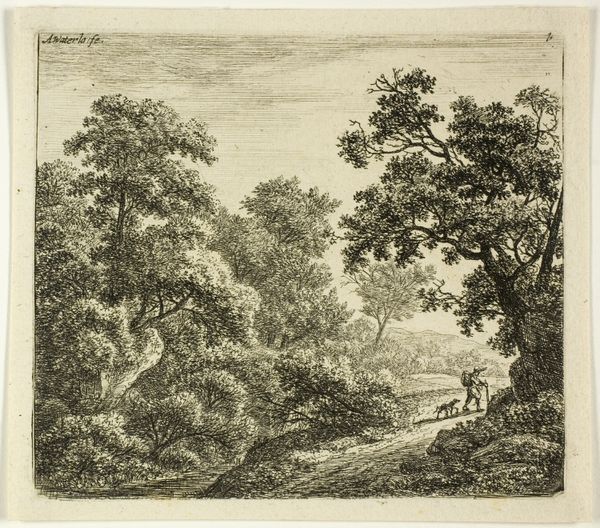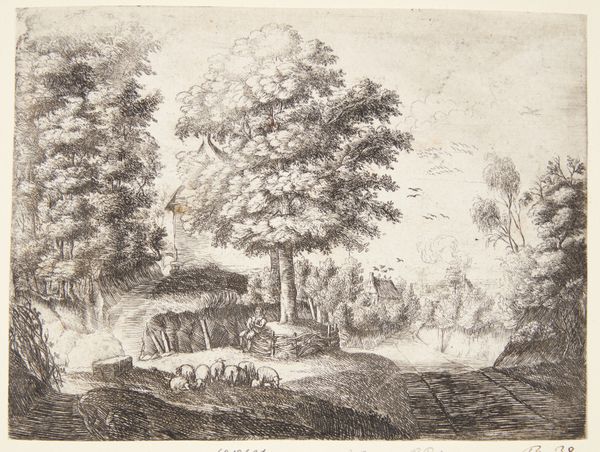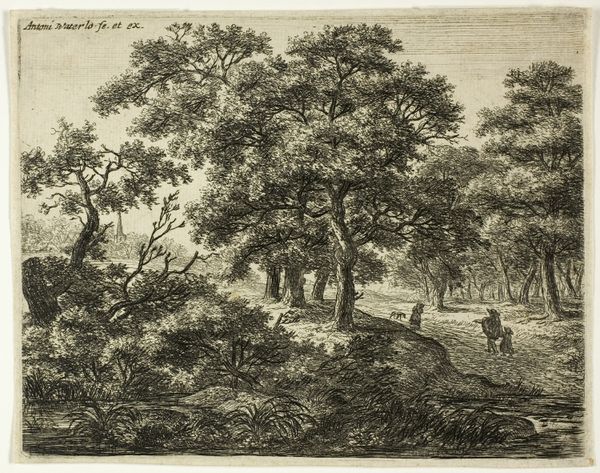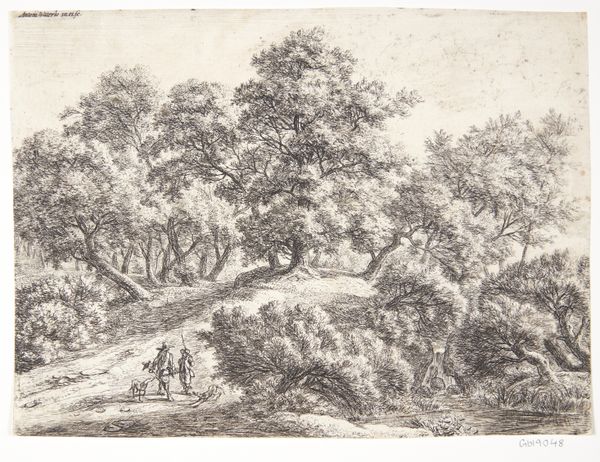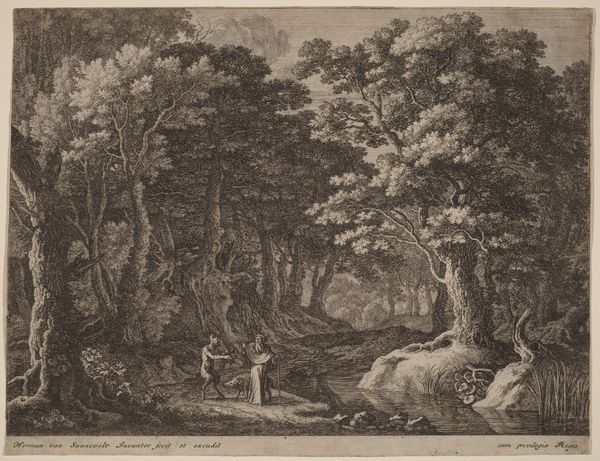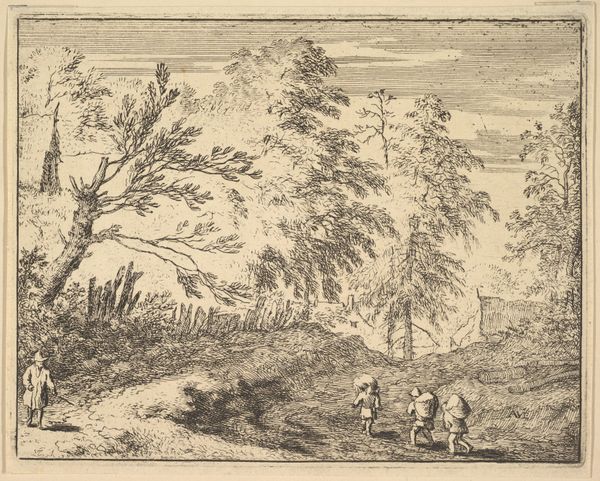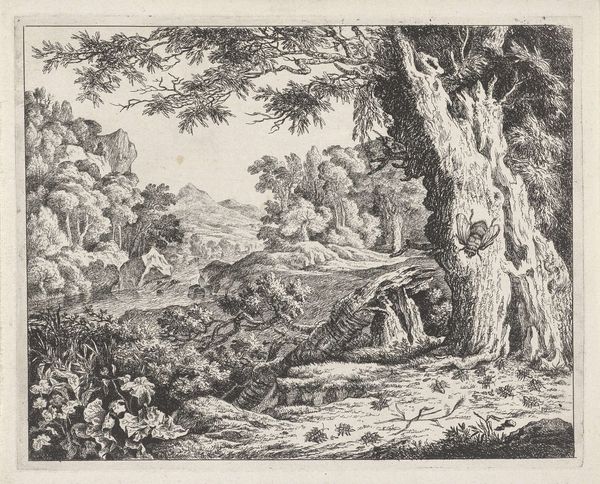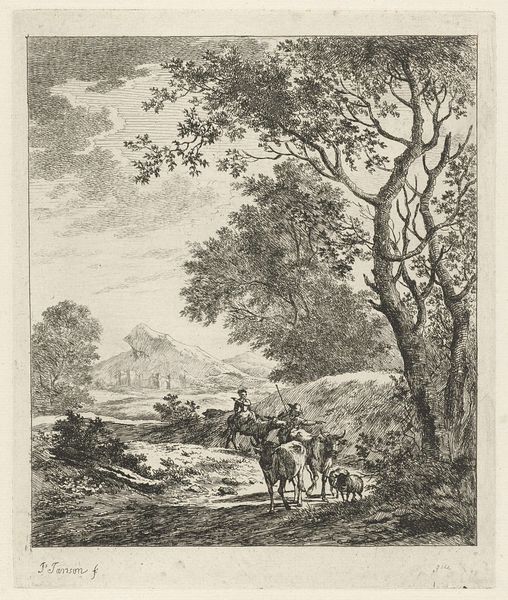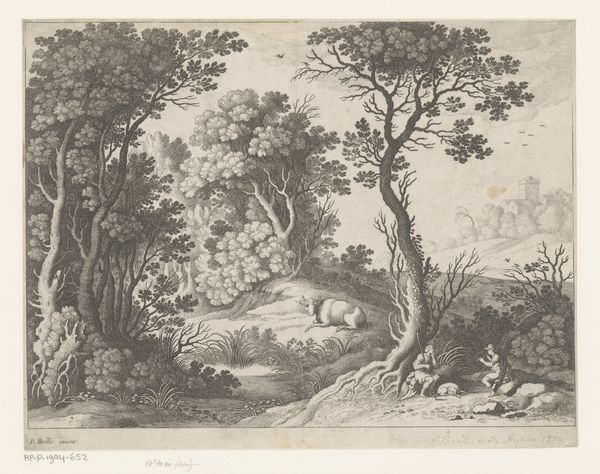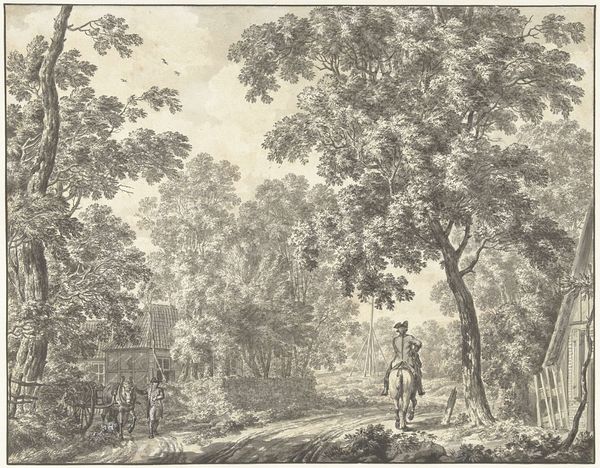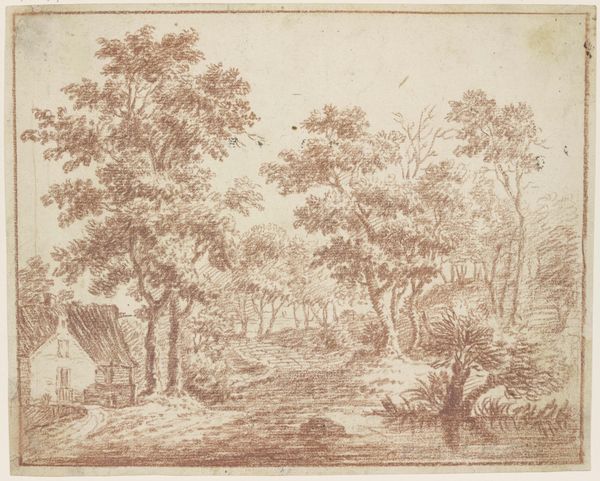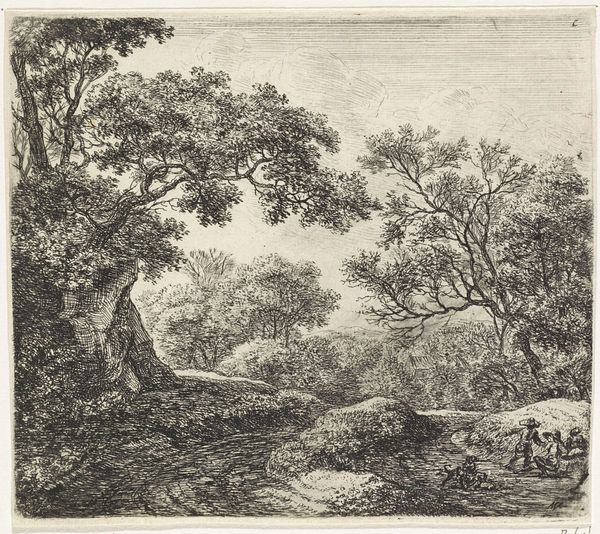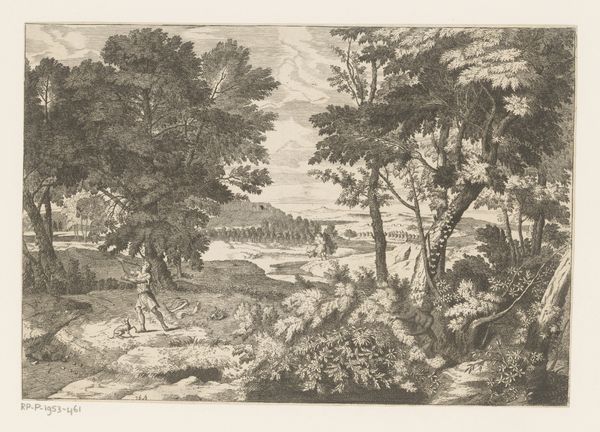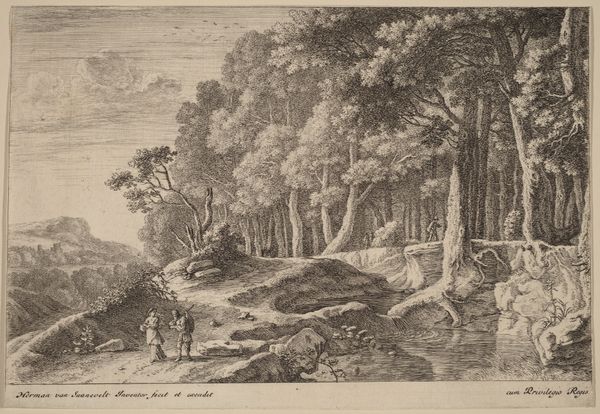
print, etching
#
baroque
# print
#
etching
#
landscape
#
figuration
#
genre-painting
Dimensions: 126 mm (height) x 175 mm (width) (bladmaal)
Curator: Today, we’re looking at Gillis Neyts’ etching, "The Banishment of Hagar and Ishmael," likely created sometime between 1618 and 1686. It resides here at the SMK, Statens Museum for Kunst. What are your first impressions? Editor: Bleak, yet elegantly composed. The scene is framed beautifully by the imposing trees, but there’s a tangible sadness emanating from the figures clustered in the center. The print’s miniature scale underscores the vulnerability of Hagar and her son. Curator: The composition certainly draws the eye into the narrative. Observe how the trees act as a proscenium, stage-framing the biblical scene. The stark contrast between the light sky and dark foreground adds to the dramatic tension. Editor: Exactly. And understanding the narrative—the expulsion of Hagar, an Egyptian slave, and her son Ishmael at the demand of Sarah to protect her son Isaac’s inheritance—we can begin to see the piece as a commentary on power dynamics, religious intolerance, and patriarchal structures. Curator: While your interpretation considers socio-historical contexts, I believe Neyts’s masterful use of line is paramount. The texture he achieves through varied etching techniques—the delicate strokes suggesting foliage, the bolder lines defining the figures—demonstrates a profound understanding of form and light. Editor: But surely those artistic choices serve to heighten the emotional impact? The very fragility of the etching seems to mirror the precariousness of Hagar's position. Her racialized identity, her status as a surrogate, her dispossession – it all demands a critical lens. Curator: A fair point. Perhaps Neyts' attention to detail also mirrors his human engagement with this critical biblical tale, reflecting the inherent tragedy that the book of Genesis glosses over. Editor: And by inviting the viewer to contemplate this uncomfortable episode, Neyts prompts reflection on our own cultural narratives surrounding exile, identity, and belonging. Curator: I agree the layered narratives provide context, while, on its own, Neyts has managed to translate a compelling rendering of a landscape with dynamic figures and evocative use of etching. Editor: A testament to art's enduring ability to spark essential, difficult conversations.
Comments
No comments
Be the first to comment and join the conversation on the ultimate creative platform.
